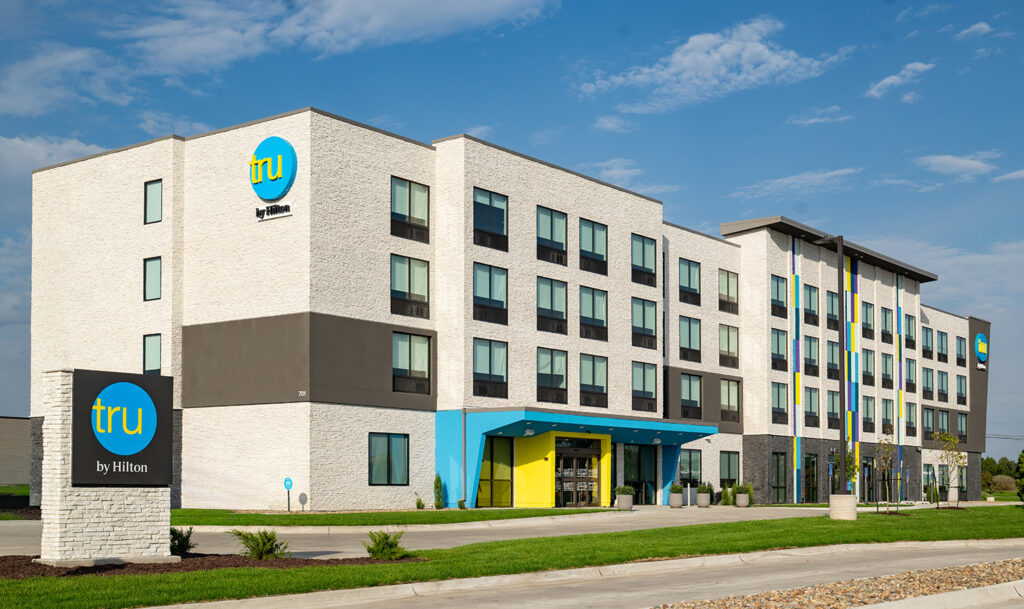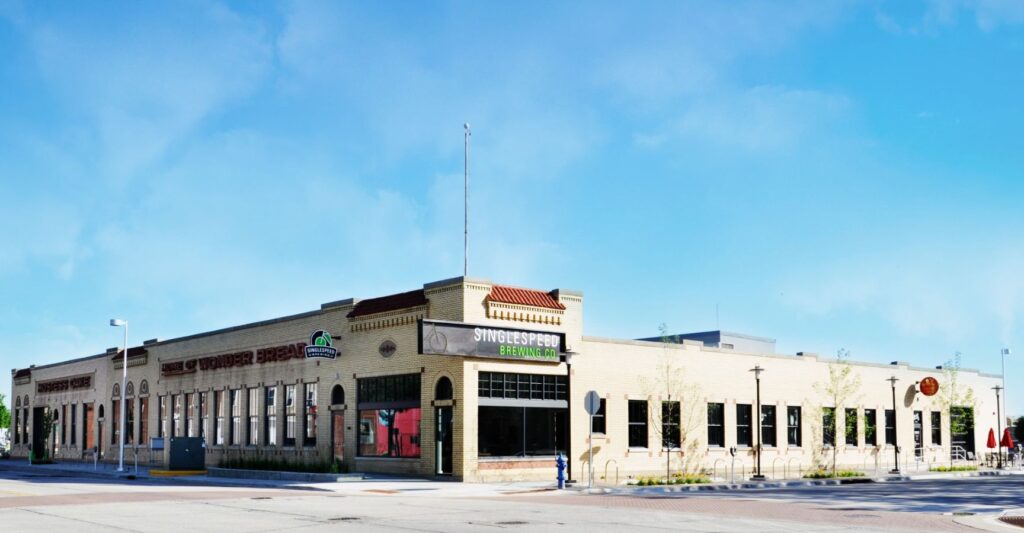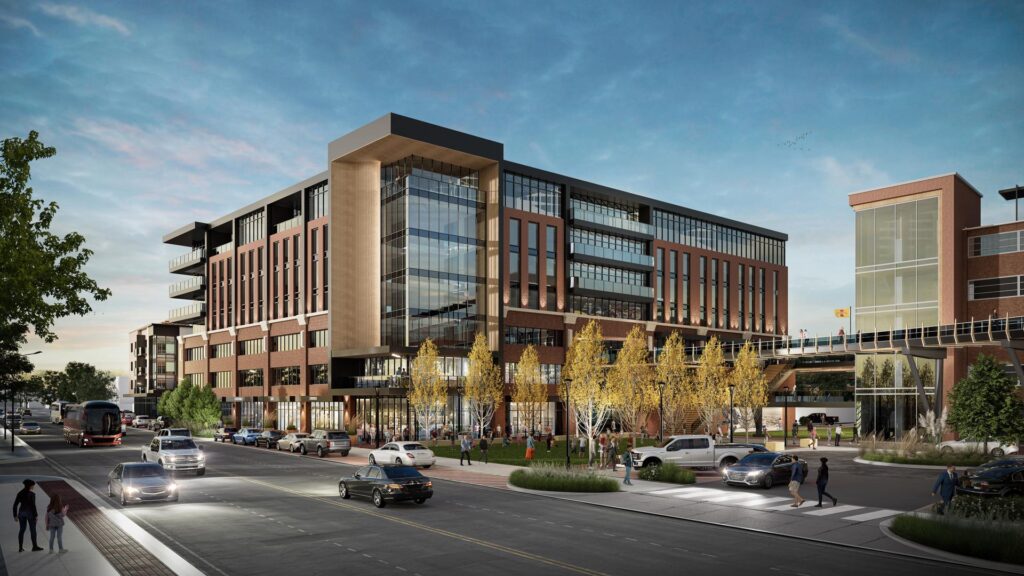Des Moines looks to abate tax abatements

KENT DARR Sep 4, 2015 | 11:00 am
13 min read time
3,160 wordsBusiness Record Insider, Real Estate and DevelopmentManeuvering through the Des Moines condo market has been both good and bad for Doug Burnett.
The Clive real estate agent and developer had just finished the first units at Olive Street Apartments in Des Moines’ Sherman Hill neighborhood when the financial crisis struck in 2008.
Along with partner Paul Koester, Burnett made it through the tough times, sold some condominiums and managed to keep the lenders at bay. Those were good times and bad times rolled into one package.
“We’ve had our run, and we were happy to do it,” Burnett said.
Notice that he is speaking in the past tense. Burnett is following discussions at Des Moines City Hall that will result in some changes to the city’s tax abatement program, a program that helped in the marketing effort to sell those condominium units. If big changes occur, it is doubtful that Burnett and Koester will finish the remaining three buildings at Olive Street Apartments.
“We built two buildings that had 12 units. We were approved to build three more. It would be highly unlikely that we would do that without the tax abatement,” he said.
The ability of property owners, including condominium owners, to shave their property tax bill for five to 10 years has played a key role in downtown development. After suffering a post-recession lull, the condominium market is seeing modest improvement. And the overall development potential for the city, especially downtown, seems to be at a fever pitch.
Developers say that many completed projects would not have made it beyond the planning stages if not for tax abatements. If the program changes after Dec. 31 — and it is a near certainty that it will — the impact on future development is uncertain.
As happens with many big issues — and make no mistake, the tax abatement discussion is being watched by economic development specialists and public officials beyond the Des Moines city limits — a convergence of circumstances has led to the debate.
Here’s what has happened:
First, the Des Moines tax abatement program will expire Dec. 31.
Second, a change in state law means that much of the property that is enjoying a tax-free ride today will return to the tax roles at a steep discount to assessed value. That could lead to a smaller increase in revenues for the city.
Third, neighborhood groups and some members of the City Council want to halt the construction of large apartment projects in concentrated areas. Affordable housing experts agree that those large projects should be spread among the larger Greater Des Moines community and be located closer to employment centers. (Earlier this year, the City Council wanted a moratorium on all multifamily housing outside of downtown with the exception of senior apartments. Legal staff advised that such a move would violate federal housing laws.)
Fourth is the desire among city leaders to raise the value of the aging housing stock in the neighborhoods and to rehabilitate streets, sidewalks, parks and other infrastructure. A study of neighborhood needs presented in 2013 to the City Council estimated that over a five-year period, the city could spend $16 million to improve housing, $10.5 million to update commercial areas and $85 million to upgrade infrastructure.
Top it off with the city’s structural deficit, the lag between revenues from property values that rise at 1.5 to 2 percent a year and the persistent 3 percent increase in city expenses. City Manager Scott Sanders has pointed out that all of the growth in downtown development that has occurred and is on the books will not fill that void. The city needs a long-term plan to boost property values and property tax revenues in the neighborhoods.
And there you have the elements of the debate, one that appears going in one direction.
As Sanders said after a public meeting last month to discuss changes in the city’s tax abatement program, “This was never intended to be that we need input to make a decision. It was more to make sure people understood what we were doing.”
An abatement for one is an abatement for all
The tax abatement changes planned for Des Moines are drawing attention from homeowners and homebuilders, developers, real estate agents, economic development professionals and leaders in neighboring communities.
During a public meeting Aug. 19, there was a clear divide between homeowners and neighborhood representatives who want to preserve or expand incentives that help improve homes and the cohesive unit of real estate agents, home builders and developers who believe that changes in the tax abatement program will stifle growth.
One broker noted recently that as a fiscally conservative Republican, he would like to see all incentive programs scrapped. On the other hand, tax abatements promote growth and result in the construction of new buildings and renovation of old buildings that will eventually show up on the tax roles.
Hollie Askey, executive director of the Warren County Economic Development Corp., which covers some territory within the Des Moines city limits, said Warren County prospers from development in the capital city and it would be unfortunate to take away or dilute available development incentives.
The view is shared by many development professionals as well as some suburban leaders, many of whom say they really don’t want to butt in on the Des Moines conversation. Still, a leader of a growing suburb noted that at some point developers need to be weaned off incentives.
Des Moines Community Development Director Phil Delafield said incentives should not be the “but for” component of a development deal. In other words, the project should be able to go forward on its own, with or without tax abatements.
Developer Jake Christensen can point to a couple of projects he was involved with that would not have happened without tax abatements: the e300 mixed-use development at 300 E. Grand Ave. and AP Lofts at 340 S.W. Fifth St.
Troy Hansen, whose Hansen Real Estate Services participated in the conversion of a Wellmark Inc. warehouse to Ballyard Lofts apartments and is in the throes of a $49 million apartment, hotel and parking garage development at East Second and East Locust streets in the East Village, said, “Cutting back on the program will prevent us from pursuing additional projects currently under consideration.”
Ballyard Lofts, the City Square project in the East Village and the planned Eagle View Lofts project near Southeast Sixth Street and Shaw Avenue would not exist without tax abatements, he said.
George Sherman, the Minneapolis developer who has built new downtown apartments and condominiums and rehabbed historic structures over the past decade in downtown Des Moines, said tax abatements play a critical role in urban housing.
There are several reasons. Land costs are higher, sites often require environmental cleanup, underground parking is expensive to build, and developers often are held to strict and costly design standards.
“Without tax abatement, these increased costs would make the project financially unfeasible,” Sherman said in an email. “With tax abatement, we are able to borrow more money in the first ten years and invest more equity to cover these costs.”
With the exception of abatements for multifamily projects in an area that falls largely outside of the downtown area, city staff is not proposing and the City Council does not seem to be seeking an elimination of tax abatements.
What would change is the 10-year, 100 percent rebate for downtown multifamily projects, to a five-year, 100 percent abatement for those projects, followed by five years of a graduated decline to 20 percent of the value of improvements on projects in the final year. (See table p.11 for all proposed changes) In addition, that program would not expire until Dec. 31, 2016, for projects that are underway by the end of this year.
Delafield and Sanders said that any changes accepted by the City Council will be monitored for their impact on future development, with additional tweaks made if necessary.
Tax abatements also are used to leverage state development incentives. The Workforce Housing Program that provides sales tax relief and provides tax credits that help defray construction costs requires a local match of at least $1,000 per housing unit. In Des Moines, that relief often is provided in the form of tax abatements, although other programs, such as revenues from tax increment financing (TIF) and federal Community Development Block Grant funds also have been used.
In addition, the Iowa Finance Authority also counts tax abatements when scoring low-income housing projects for funding,
Delafield said the use of TIF is the subject for another discussion, although it can be useful for downtown projects. Acquiring TIF funds can be a complicated process, and in a sprawling urban renewal area that covers downtown the city is nearing its self-imposed limit of reserving 25 percent of those funds for return to the city treasury and other taxing bodies, such as schools.
Abatements, on the other hand, are there for the taking, with the type of rebate largely determined by location. That’s a requirement of state law.
A change for single-family housing
Possible changes to the tax abatement program have been modified, slightly, since first proposed to the City Council in July.
After that meeting, it was clear that council members and representatives of neighborhood groups were intent on preserving and possibly extending abatements for large-scale rehabilitations of single-family homes.
The original recommendation was to place those projects on a declining scale. The new suggestion is provide a five-year, 100 percent abatement for residences outside the targeted area and a 10-year, 100 percent abatement within the targeted area.
Delafield, the city’s community development director, said the city could consider changing the targeted area, shifting it away for some parts of the city and extending it to others.
There is support for infill development and rehabilitation projects in the neighborhoods, he said.
However, much to the chagrin of homebuilders and real estate agents, there does not appear to be widespread support for filling new subdivisions with single-family homes, especially when the average value of those homes, which are sold with the help of tax abatements, is in the $165,000 to $170,000 range.
Sanders, the Des Moines city manager, said the city pays additional costs for the development of those subdivisions and stands to gain little in return through property tax revenues for five years.
“The rest of the city has to balance those costs,” he said.
Hubbell Realty Co. is the city’s largest builder of residential properties — single-family homes, townhomes and apartment buildings — and President and CEO Rick Tollakson, along with every metro homebuilder who has weighed in on the subject — believes the abatements for single-family homes should be extended.
“The argument that it doesn’t seem to be working so we should reduce it doesn’t make a lot of sense to me,” he said.
Ron Grubb, head of Jerry’s Homes, predicts the demise of single-family homebuilding in the city if abatements are weakened. The abatements are a marketing weapon that turns lookers into buyers, Grubb and others say.
Timothy Schutte, owner of Exit Realty Capital City, helps the Neighborhood Finance Corp. find buyers for its projects, and he is planning to buy the residential floors of the Kirkwood Hotel and turn its 54 apartments into for-sale condominiums.
In the single-family market, some lenders calculate tax abatements into a buyer’s income, he said.
Sanders said the city is investigating that claim, which was made by other Realtors during the Aug. 19 public meeting. The city doesn’t not want to impede anyone’s ability to become a homeowner, he said.
Condos and townhomes for sale
Tollakson isn’t reluctant to point out that Hubbell is the only builder of for-sale housing in the downtown market right now.
The company is turning heads for its ability to build and sell townhome units in the Artisan Row project near 16th Street and Grand Avenue, just as it turned heads in the Brownstones developments near Second and Grand avenues.
Realtor and developer Burnett points out that some buyers of Hubbell’s initial Brownstones on Grand project worked in Ames but were attracted to the downtown Des Moines lifestyle — and the city’s tax abatements.
“They have been a huge draw,” he said. “Des Moines does not enjoy a great reputation for attracting new construction. There are a lot of reasons; some are valid, some aren’t. There’s a reason they brought the tax abatement to begin with, and it’s going to be a huge blow if they do away with them, especially downtown.”
On the other hand, Burnett said that from a “macro” view, renters and buyers are becoming “urban-centric.”
“So this draw to the urban center, even its suburbs, continues to happen,” he said. “I feel very good about owning some of those properties long term.”
The big demand remains for rental units, he said, but the desire to have an ownership stake is growing.
Tollakson has taken note of the increased appetite to own downtown through the success of townhome projects. Hubbell will build $400,000 townhomes in its Bridge District development, and don’t be surprised to see them pop up on a section of the former Riverfront Y property at 100 Locust St.
The developer is toying with the idea of topping a structure offering high-end apartments at the site with condominiums. Tollakson believes there is a small but dedicated market for luxury condominiums, especially ones overlooking the Des Moines River.
As with any downtown development, tax abatements will be an important marketing tool.
“Tax abatement is key for all downtown marketing,” Tollakson said. “You’re asking people to still be something of a pioneer to invest in downtown housing. We don’t have that critical mass yet, but we’re working on it.”
Proposed changes in Des Moines tax abatement programs:
The city’s tax abatement programs fall under two broad categories: targeted and citywide. Targeted areas are primarily downtown and central-city neighborhoods. Here are the existing programs and proposed changes.
Single-family homes
Citywide: New construction/rehabilitation
Current: 5-year, 100 percent
Proposed: 5-year declining schedule for new homes; retain 5-year, 100 percent abatement for major rehabilitation.
Rehabilitation only
Current: 10-year, 115 percent, capped by state law at $20,000
Proposed: Seek increase in the cap.
(Note: This is the most frequently used for small rehabilitation projects across the city.)
Targeted areas
Current: 10-year, 100 percent
Proposed: 5-year, 100 percent, then 5-year declining schedule, extend eligibility under current program to Dec. 31, 2016. Retain 10-year, 100 percent abatement for major rehabilitations.
Multifamily residential rehabilitation
Citywide
Current: 5-year, 100 percent
Proposed: 5-year declining schedule
Targeted areas
Current: 10-year, 100 percent
Proposed: No change
Multifamily new construction
Citywide
Current: 5-year, 100 percent
Proposed: Eliminate; amend design guidelines for site approval in effort to increase construction standards
Targeted areas
Current: 10-year, 100 percent
Proposed: Extend current deadline to Dec. 31, 2016, then 5-year, 100 percent followed by 5-year declining schedule beginning Jan. 1, 2017
Commercial
Current: 3-year, 100 percent or 10-year declining schedule
Proposed: No change; amend design guidelines for industrial projects
Source: City of Des Moines
Gambling on condos
At 31, Timothy Schutte is ready to make a statement, and there are a lot of developers who will listen to what he has to say and watch him while he says it.
Schutte is the broker owner of Exit Realty Capital City in Des Moines. Or, as some people might know him, that guy who wants to buy the residential floors of the Kirkwood Hotel at 400 Walnut St. and convert them to condominiums.
Three of the units went on the market Aug. 28 at the request of his lender in the deal, GNB Bank of Grundy Center.
“I’m a small player trying to play in a bigger pond, and getting financing was not the easiest thing in the world, but we’re getting it done,” Schutte said.
As a broker owner of a relatively young real estate company, Schutte wants to get the company’s name before the public. He’ll accomplish that goal if the Kirkwood project is a success.
For now, he has a pretty good thing going. The Kirkwood went through a historic renovation that was completed in 2006. The Coppola family has been the majority owner, and they have enjoyed near 100 percent occupancy. The units range in size from 869-square-foot lofts to 1,366-square-foot, two-bedroom units. Prices will run from about $155,700 to $260,000.
The project has been covered by three tax abatements that went into effect at the various times when renovations were completed. The last of the abatements will expire in 2017, meaning a buyer who pays $260,000 would save about $7,000 a year for two years on their tax bill.
“I’d love to have a waiting list for sales,” Schutte said.
He noted that if the Kirkwood remained an apartment building, the expiration of tax abatements would lead to a large increase in property taxes and make the project difficult to finance.
Condominium sales through Aug. 28 in Polk County are running a little ahead of last year’s pace, with 212 units sold, compared with 232 for all of 2014. Some of the sales are still being helped along by tax abatements. Sales are not strong enough to trigger much enthusiasm for the development of new units.
One reason is that demand for rental units remains strong, especially in the downtown area, said Des Moines Assistant City Manager Matt Anderson, who noted that the city’s most active developers are not showing so much as modest interest in traditional condominiums.
Hubbell Realty Co., on the other hand, has enjoyed head-turning success with for-sale townhouses, and the company plans to build more, said President and CEO Rick Tollakson.
There are a variety of reasons, but the main impediment to condominium development comes from the Federal Housing Administration, which has tight lending policies for potential buyers. Before the FHA will approve loans, 30 percent of the units in a condominium must be pre-sold to buyers who are paying cash or using financing that is not backstopped by the federal government.
And conventional lenders are reluctant to enter the market. Part of the reason is the structure of condominium regimes, which own the land on which condominiums sit. If a condominium loan goes bad, the lender might acquire a condo unit but it also becomes a partner in a condominium association. A townhome owner, on the other hand, owns the structure and the land under it.
What works in Schutte’s favor is the fact that the Kirkwood’s residential units — he is not buying the first-floor commercial space — require little capital expense on his part. He is painting apartments and sampling new floors, for example.
And, he believes he is selling at a price that will appeal to buyers.
“I think the biggest thing is that I’m not going to be the most expensive thing in town,” Schutte said.
He also understands that he is being watched.
“I think to some degree I am an experiment so others can see how well they sell,” Schutte said.











